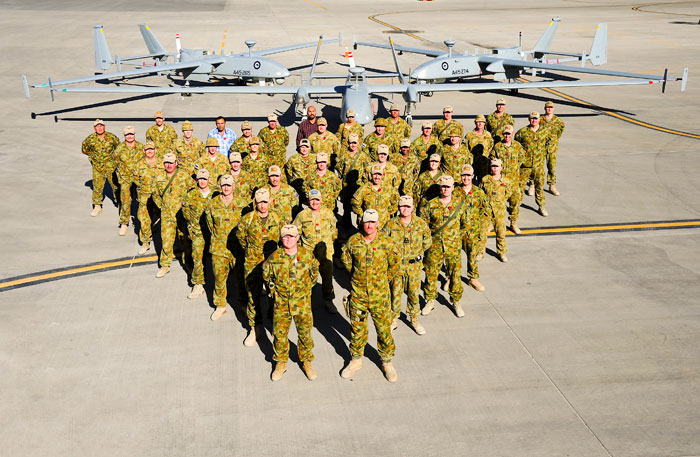

While coalition forces begin to withdraw from Afghanistan, the Heron I remotely piloted aircraft (RPA) operated with the Australian Heron Detachment is set to continue providing invaluable Intelligence, Surveillance and Reconnaissance (ISR) information to coalition troops operating inside Afghanistan, well into 2014. Built by Israel Aerospace Industries, the Heron I is leased and operated by the Canadian company MDA.
In November 2013 the Australian Heron detachment marked the 20,000 operational flight hours milestone. The Heron RPAs (newspeak for Unmanned Aerial Vehicle or UAV) are flying between 400 to 500 hours each month, performing medium altitude, long endurance (MALE) missions. It can conduct single missions in excess of 24 hours, with a maximum speed of more than 100 knots (180 km/h) at altitudes of up to 10,000 metres.
According to Royal Australian Air Force sources, the decision to extend the Heron mission sees the Tri-Service Detachment working for a new client, ISAF (International Security Assistance Force) Regional Command South. Based at Kandahar Airfield, Heron Detachment’s ongoing tenure in Afghanistan originated from a request from ISAF to the Australian Government.


Previously the Herons were supporting exclusively the Australian forces operating in Uruzgan. They will now support coalition forces through their operations in Southern Afghanistan. The Tri-Service Detachment Rotation 13 is expected to return to Australia by mid-year 2014.
Unlike small unmanned aerial vehicles (UAVs), the 1.1 tonne Heron Remotely Piloted Aircraft is operated from an airfield runway in conjunction with other manned aircraft. The Australian Heron is based at Kandahar, which is anecdotally the busiest single-runway airfield in the world. To ensure the safe and effective operation of the aircraft at such a busy airfield, Air Force uses military pilots who have experience with the complex and dynamic airspace to pilot the Heron.
Pilots qualified on Army helicopters, F/A-18 Hornets, F-111s, AP-3C Orion and C-130J Hercules have deployed and operated the Heron Remotely Piloted Aircraft since August 2009. The Heron pilot is supported by a Payload (Sensor) Operator who also acts as co-pilot for the Heron.
In addition, up to seven operational staff process, analyse and disseminate information from the Heron’s sensors. The operational staff may include aircrew, intelligence staff, operations officers, engineering staff, administration officers and logisticians.























